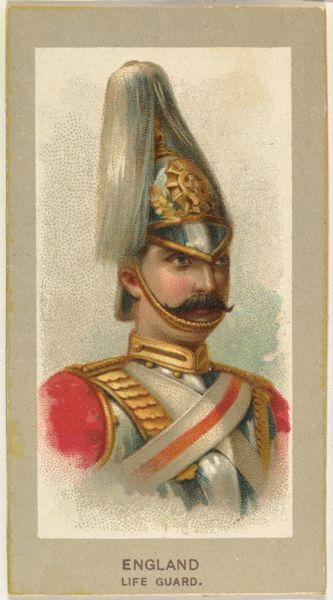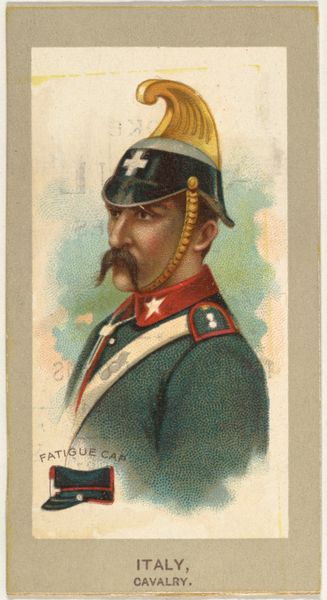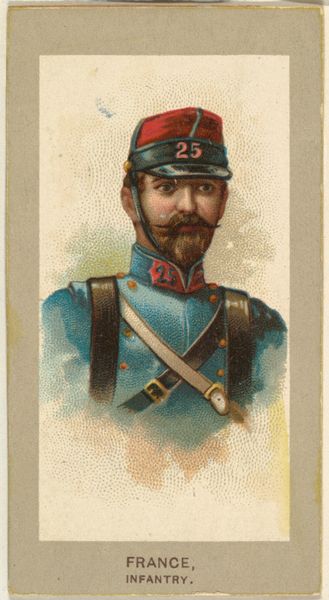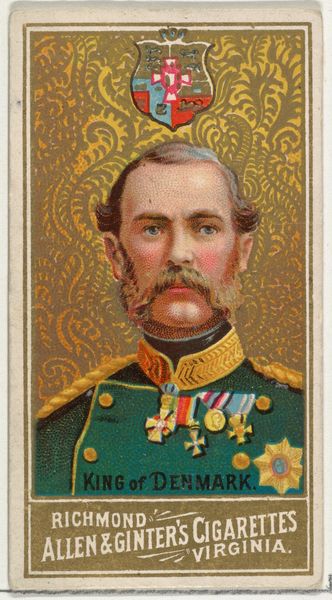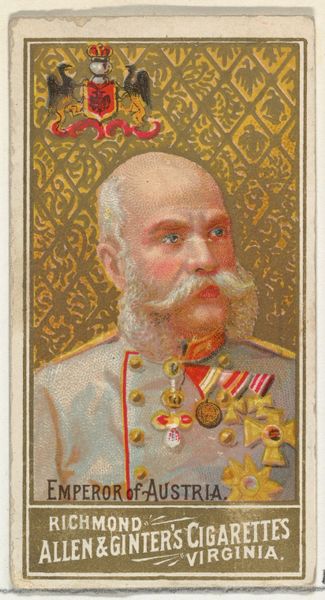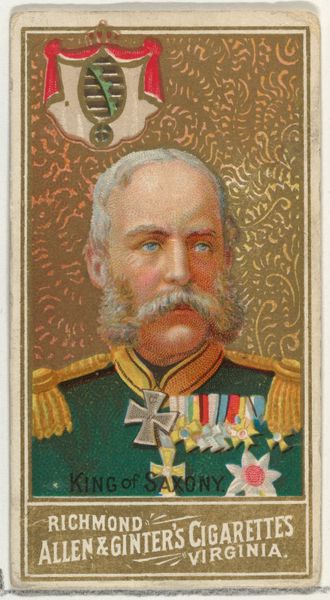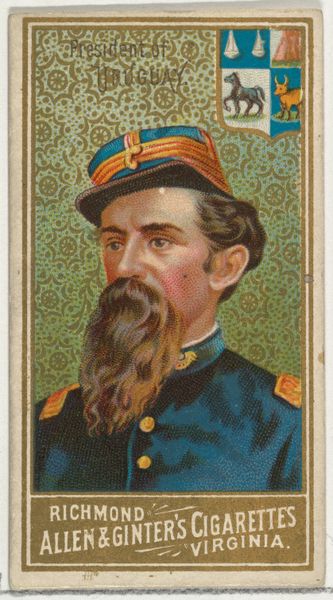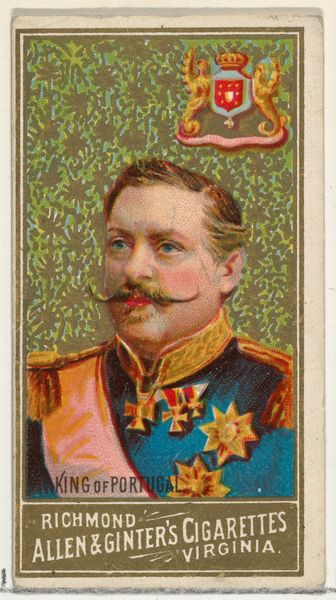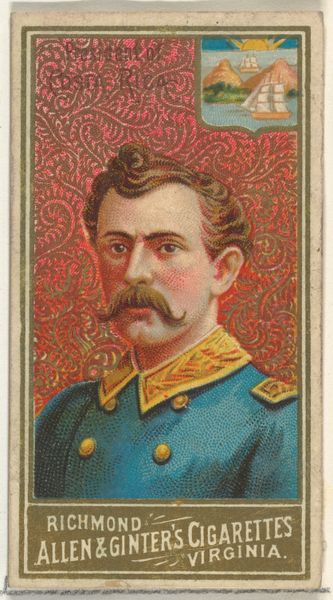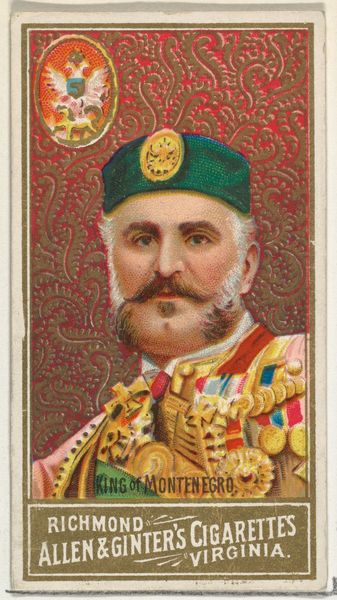
MacMahon, from the Great Generals series (N15) for Allen & Ginter Cigarettes Brands 1888
0:00
0:00
drawing, lithograph, print
#
portrait
#
drawing
#
lithograph
# print
#
caricature
#
genre-painting
#
academic-art
Dimensions: Sheet: 2 3/4 x 1 1/2 in. (7 x 3.8 cm)
Copyright: Public Domain
Editor: So this lithograph, "MacMahon, from the Great Generals series," was printed in 1888 for Allen & Ginter Cigarettes. He looks so…ornate. I can’t help but think about how this image functions as advertising, but what do you see when you look at this piece? Curator: Immediately, I’m drawn to the historical context. These "Great Generals" cards weren't just innocuous collectibles. They were powerful tools of cultural myth-making, subtly reinforcing ideas of colonial power and military strength through the romanticized depiction of figures like MacMahon. Editor: So the point was less about artistry and more about promoting a specific worldview? Curator: Exactly. Allen & Ginter weren't simply selling cigarettes; they were selling an idea of nationhood, one rooted in hierarchical power structures. The depiction of MacMahon, specifically, must be considered alongside the histories of colonialism and French military campaigns of the time. How does that change your perception of the piece? Editor: It definitely complicates my view. Seeing it as a tool of propaganda rather than just a portrait makes me think about whose stories are being told, and who is being left out. It's odd that we can analyse such subtle forms of promotion, from way back then. Curator: Precisely! Consider the power dynamics inherent in a trading card series that valorizes military leaders. The act of collecting and trading these cards might seem trivial, but it normalizes a certain reverence for authority. These kinds of pieces need interrogation. Editor: I see now it’s less about individual artistry, but understanding how it works in social contexts! I'll keep all that in mind going forward.
Comments
No comments
Be the first to comment and join the conversation on the ultimate creative platform.
